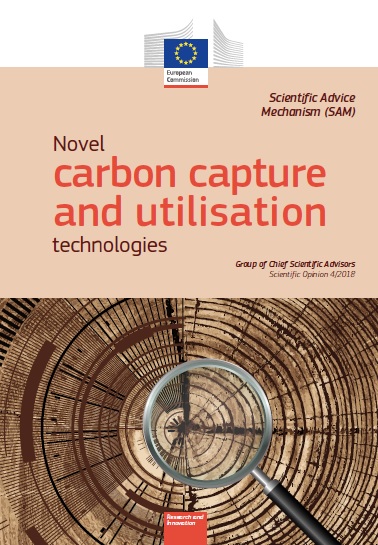SAPEA Reports
Group of Chief Scientific Advisors
Scientific Opinion 4/2018 (Supported by SAPEA Evidence Review Report No 3)
Brussels, 23 May 2018
The European Union has committed to achieve an economy-wide domestic target of at least 40% greenhouse gas (GHG) emission reductions for 2030 and at least 80% GHG reductions by 2050. This should allow the EU to contribute to keep global warming well below 2°C as agreed by the almost 200 signatory parties to the 2015 Paris Climate Agreement.
Achieving those reduction targets requires the deployment of new and efficient technologies, appropriate legislative and policy initiatives, as well as investments in research and innovation (‘R&I’) and an appropriate financial framework to facilitate the demonstration and deployment of technologies in the higher range of TRLs (Technology Readiness Level). Among the techniques that can mitigate CO2 emissions are those that are referred to as Carbon Capture and Utilisation that included capture, conversion and hydrogen generating technologies.
The Group of Chief Scientific Advisors was asked by the European Commission to advise on the climate mitigation potential of Carbon Capture and Utilisation (CCU) technologies in view of future policy decisions in this field, including on financial support by the European Union. The decisions should support technologies that are environmentally sound and provide genuine climate benefits.
The main questions put to the Group of Chief Scientific Advisors were:
-Under what circumstances Carbon Capture and Utilisation for production of fuels, chemicals and materials can deliver climate benefits and what are their total climate mitigation potential in the mid-and long-run?
-How can the climate mitigation potential of CO2 incorporated in products such as fuels, chemicals and materials be accounted for considering that the CO2 will remain bound for different periods of time and then may be released in the atmosphere?
This Scientific Opinion provides evidence based answers drawn from a literature review, a scientific expert workshop and stakeholder consultation. Its conclusions can be divided into the following five sections.


The comment area